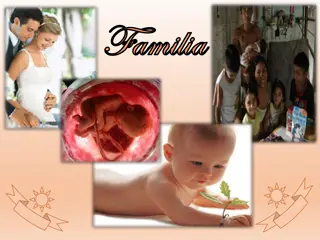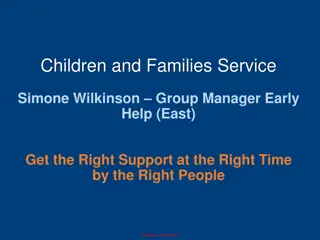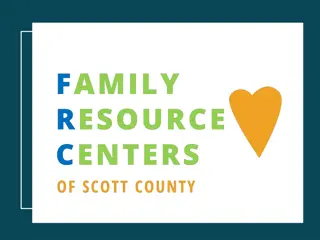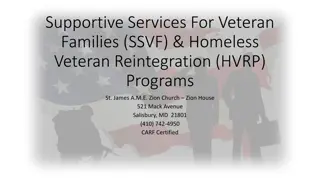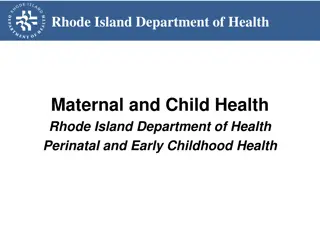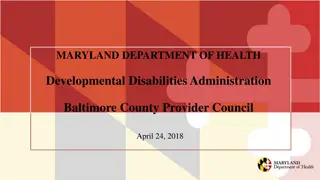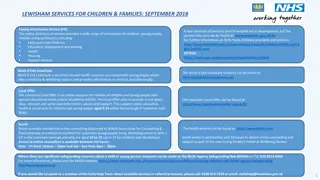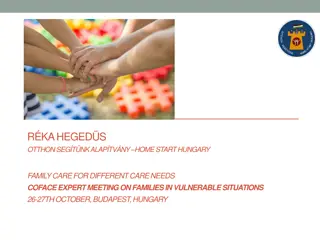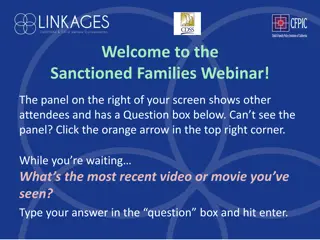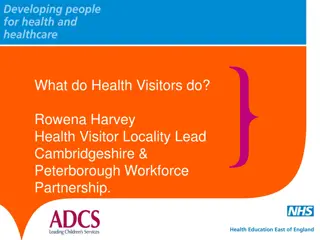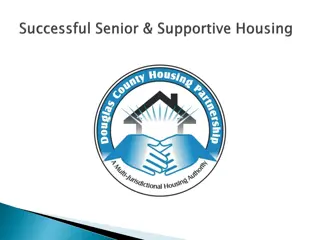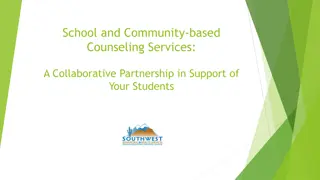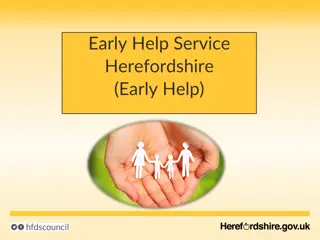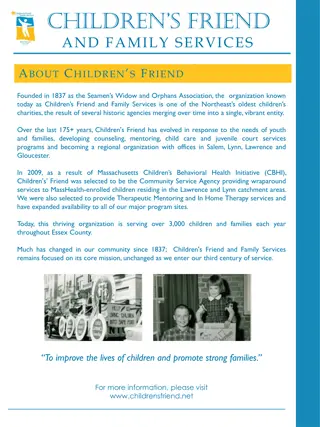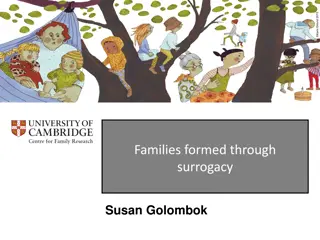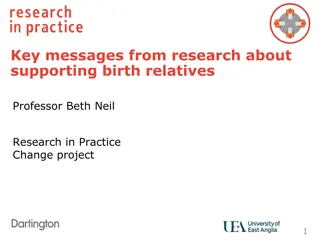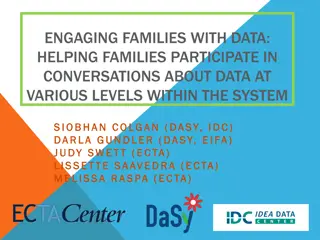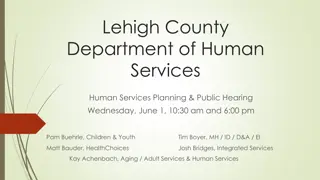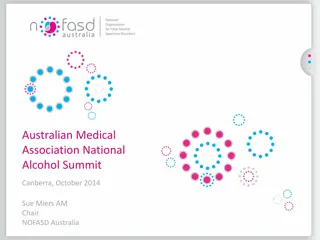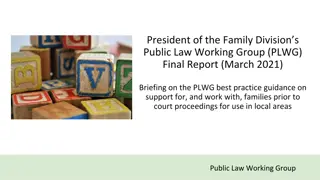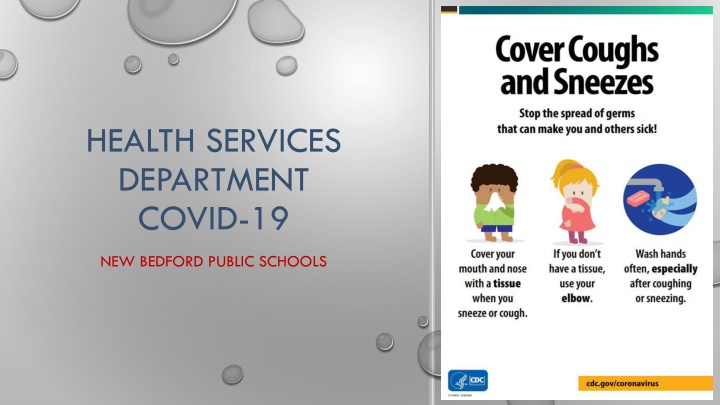
COVID-19: Symptoms, Prevention, and Safety Measures
Learn about COVID-19 including symptoms, prevention methods, the importance of wearing masks, social distancing, hand hygiene, quarantine, and isolation. Find out how the virus spreads among children and adults, the significance of testing, and follow guidelines to protect yourself and others from contracting the virus.
Download Presentation

Please find below an Image/Link to download the presentation.
The content on the website is provided AS IS for your information and personal use only. It may not be sold, licensed, or shared on other websites without obtaining consent from the author. If you encounter any issues during the download, it is possible that the publisher has removed the file from their server.
You are allowed to download the files provided on this website for personal or commercial use, subject to the condition that they are used lawfully. All files are the property of their respective owners.
The content on the website is provided AS IS for your information and personal use only. It may not be sold, licensed, or shared on other websites without obtaining consent from the author.
E N D
Presentation Transcript
HEALTH SERVICES DEPARTMENT COVID-19 NEW BEDFORD PUBLIC SCHOOLS
COVID-19 The virus that causes COVID-19 most commonly spreads between people who are in close contact with one another (within about 6 feet, or 2 arm lengths). It spreads through: respiratory droplets or small particles, such as those in aerosols, produced when an infected person coughs, sneezes, sings, talks, or breathes. https://www.cdc.gov/coronavirus/2019- ncov/downloads/community/schools-childcare/back-to-school- decision-checklist.pdf
Children and Covid-19 Children can be infected with the virus that causes COVID-19, can get sick with COVID-19, and can spread COVID-19 to others. Children, like adults, who are infected but have no symptoms can still spread the virus to others. Although most children have mild or no symptoms at all, they can still get severely ill or have life threatening complications. HTTPS://WWW.CDC.GOV/CORONAVIRUS/2019- NCOV/DOWNLOADS/STOP-THE-SPREAD-OF-GERMS-11X17-SP.PDF
SYMPTOMS People with COVID-19 have had a wide range of symptoms reported ranging from mild symptoms to severe illness. Symptoms may appear 2-14 days after exposure to the virus. People with these symptoms may have COVID-19: Fever or chills Cough Shortness of breath or difficulty breathing Fatigue Muscle or body aches Headache New loss of taste or smell Sore throat Congestion or runny nose Nausea or vomiting Diarrhea This list does not include all possible symptoms. CDC will continue to update this list as we learn more about COVID-19.
Three Important Ways to Slow the Spread: 1. Wear a mask to protect yourself and others and stop the spread of COVID-19. 2. Stay at least 6 feet (about 2 arm lengths) from others who don t live with you. 3. Avoid crowds. The more people you are in contact with, the more likely you are to be exposed to COVID-19. 4. Practice good hand hygiene. Wash your hands with soap and water for at least 20 seconds after coughing, sneezing, using the bathroom, etc. If soap and water is unavailable, use an alcohol based hand sanitizer. Link: https://www.cdc.gov/coronavirus/2019- ncov/prevent-getting-sick/prevention.html
QUARANTINE AND ISOLATION Are public health practices used to protect the public by preventing exposure to people who have or might have a contagious disease, such as COVID-19. Quarantine keeps someone who might have been exposedto the virus away from others. Isolation keeps someone who is infected with the virus away from others, even in their home. Link for additional information: https://www.cdc.gov/coronavirus/2019-ncov/if-you-are-sick/isolation.html If a student or staff member has been identified as a close contact of someone with COVID-19, that student or staff member should be tested for COVID-19 and stay at home for a period of 14 days after their last contact with the person who has COVID-19.
PROTECTING YOURSELF AND FAMILY Wash your hands often Cover coughs and sneezes Clean and disinfect Monitor your health daily Protect yourself from the flu Stay home when sick or someone in the home is sick Parents and guardians are encouraged to monitor their children for signs of infectious illness every day. Students who have symptoms or who have had a close contact or potential exposure to someone with COVID-19 should not attend school in-person. If a child tests positive for or is suspected of having COVID-19, the parent or guardian should notify the school. A child can return to in-person school only after: It has been at least 10 days since symptoms started and; Overall symptoms have improved and; The child has no fever for at least 72 hours (without fever-reducing medication).
What counts as close contact? You are considered a close contact if: You were within 6 feet of someone who has COVID-19 for a cumulative total of 15 minutes or more over 24 hours You provided care at home to someone who is sick with COVID-19 You had direct physical contact with the person (hugged or kissed them) You shared eating or drinking utensils They sneezed, coughed, or somehow got respiratory droplets on you Parents/Guardians will be notified if a student is considered a close contact to a individual that tests positive for COVID-19 within the school community If a student or staff member has been identified as a close contact of someone with COVID-19, that student or staff member should be tested for COVID-19 and stay at home for a period of 14 days after their last contact with the person who has COVID-19.
Stay home except to get medical care Monitor your symptoms. If you have an emergency warning sign (including trouble breathing), seek emergency medical care immediately Stay in a separate room from other household members, if possible Use a separate bathroom, if possible Avoid contact with other members of the household and pets Don t share personal household items, like cups, towels, and utensils Wear a mask when around other people, if you are able to Learn more about what to do if you are sick. You can be with others after At least 10 days since symptoms first appeared and At least 24 hours with no fever without fever-reducing medication and Other symptoms of COVID-19 are improving
MONITORING YOUR CHILD DAILY FOR SYMPTOMS ENGLISH:HTTPS://WWW.CDC.GOV/CORO NAVIRUS/2019- NCOV/IMAGES/COMMUNITY/SCHOOLS- CHILDCARE/PLANNING-PARENTS-INPERSON- THUMB.PNG SPANISH:HTTPS://WWW.CDC.GOV/CORO NAVIRUS/2019- NCOV/COMMUNITY/PDF/BACK-TO- SCHOOL-PLANNING-FOR-IN-PERSON- CLASSES-SP.PDF CREOLE:HTTPS://WWW.CDC.GOV/CORON AVIRUS/2019- NCOV/COMMUNITY/PDF/BACK-TO- SCHOOL-PLANNING-FOR-IN-PERSON- CLASSES-HT.PDF
Fears/Concerns Children may worry about themselves, their family, and friends getting ill with COVID- 19. Parents and guardians play an important role in helping children make sense of what they hear in a way that is honest, accurate, and minimizes anxiety or fear. CDC has created a COVID-19 parental resources kit and guidance to help adults have conversations with children about COVID-19, outlining ways they can avoid getting and spreading COVID-19.
REFERENCES CDC. CENTER FOR DISEASE AND PREVENTION. HOW COVID-19 SPREADS. HTTPS://WWW.CDC.GOV/CORONAVIRUS/2019- NCOV/TRANSMISSION/INDEX.HTML CDC. CENTER FOR DISEASE AND PREVENTION. MAKING DECISIONS ABOUT CHILDREN ATTENDING IN-PERSON SCHOOL DURING THE COVID-19 PANDEMIC: INFORMATION FOR PARENTS, GUARDIANS, AND CAREGIVERS. HTTPS://WWW.CDC.GOV/CORONAVIRUS/2019-NCOV/COMMUNITY/SCHOOLS-CHILDCARE/DECISION-TOOL.HTML CDC. CENTER FOR DISEASE AND PREVENTION. HOW TO PROTECT YOURSELF & OTHERS. HTTPS://WWW.CDC.GOV/CORONAVIRUS/2019-NCOV/PREVENT-GETTING-SICK/PREVENTION.HTML

